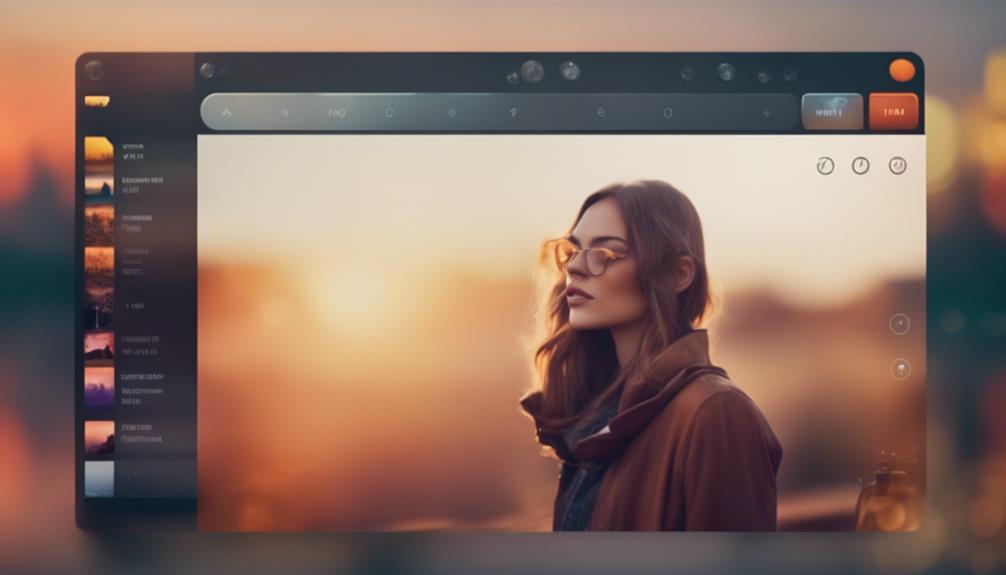To identify modals on a webpage, start by checking the z-index value; modals usually have a high z-index (1000+), making them appear above other elements. Look for HTML structure too; elements with classes or IDs like "modal" or "popup" are strong indicators. You can also inspect CSS properties; if you see 'display: block' instead of 'display: none,' it likely means the modal is active. Don't forget to use JavaScript methods, like querying for modal-related classes. Keep exploring these elements, and you'll uncover more tips on effective modal identification.
Understanding Modals in Web Design

Using modals effectively in web design can considerably enhance user interaction. A modal is an essential overlay element that appears on top of your main content, often used to display important information or prompt actions without forcing users to navigate away from the current page. When you implement modals, make certain they're styled with high z-index values (1000+) in CSS. This guarantees they stand out, grabbing users' attention.
To improve the user's experience, ascertain background interactions are restricted when a modal is active. You can achieve this by applying overflow hidden properties to the HTML and body elements, preventing scrolling of the underlying content. It's also imperative to make closing the modal easy; consider incorporating a close button, allowing clicks outside the modal, or using keyboard shortcuts. These actions can help avoid user frustration and improve accessibility.
Inspecting CSS for Modals
When inspecting CSS for modals, start by looking for elements with high z-index values, often set at 1000 or higher. This signals that these elements are layered above other content, making them prime candidates for modals. Next, check the position property; modals usually have a fixed positioning (position: fixed) to guarantee they stay in view when the user scrolls.
You should also examine the overflow property on the HTML and body elements. If you see "hidden" or "scroll," it likely indicates that the modal restricts page scrolling, enhancing focus on the modal content.
Additionally, look for common display properties like "block" or "flex," which allow the modal to be visible and properly aligned on the screen.
Don't forget to review the CSS for any backdrop or overlay elements, as these are often used to obscure the underlying content, creating a better user experience. Finally, utilize your browser's developer tools to analyze the computed styles of suspected modal elements, paying attention to any transitions or animations that are typical for popups. This thorough approach will help you effectively identify modals in web design.
Analyzing HTML Structure

To effectively analyze the HTML structure of modals, start by identifying elements with high z-index values, typically set at 1000 or above, as these often indicate overlaying content. Look for div elements that contain classes or IDs associated with modals, like "modal," "popup," or "dialog." These naming conventions help you pinpoint the elements that serve as auxiliary components in your user interface.
Next, check for attributes such as 'role='dialog'' or 'aria-modal='true'', which are indicators that the element is specifically designed for modal usage. This information is essential for understanding how screen readers will interpret the modal.
Additionally, analyze the CSS styles applied to the modal container. Properties like 'display: none;' will likely switch to 'display: block;' when the modal is active, revealing the form or content you're examining.
Using JavaScript for Detection
JavaScript offers powerful tools for detecting modals on a webpage. You can use the 'document.querySelectorAll' method to select elements with specific classes or IDs that are commonly associated with modals, like '.modal' or '#popup'. This method helps you pinpoint where modals might be lurking in your document.
Another handy feature is the 'MutationObserver' API, which allows you to detect changes in the DOM. By observing when modal elements are added or removed, you can stay updated on which modals are active. Additionally, attaching event listeners to 'click' and 'focus' events lets you monitor user interactions that might trigger modal displays.
To determine if a modal is currently active, you can check the computed styles of elements for properties like 'display: block' or 'visibility: visible'. Analyzing the z-index of elements is also essential since modals usually have high z-index values (like greater than 1000) to overlay other content. By using these techniques, you've effectively created a robust system for detecting modals, much like identifying modal auxiliary verbs in a sentence.
Best Practices for Modal Identification

Effective modal identification requires a strategic approach to guarantee you catch all instances of these interactive elements on a webpage. To enhance your detection techniques, consider the following best practices:
- Use a DOM inspector tool to check for elements with high z-index values (1000+).
- Examine CSS properties of HTML and body elements for overflow set to 'hidden'.
- Look for patterns in HTML structure, focusing on classes or IDs like 'modal' or 'popup'.
- Implement JavaScript event listeners to detect user interactions that trigger modals.
- Regularly log URLs of pages where modals are detected for trend analysis.
Using modal verbs and auxiliary verbs in your documentation can help clarify your methods. When you've identified a modal, it's essential to highlight its past participle form for accurate reporting. For example, if a user clicks a button, they might have opened a modal, which you can document as "opened" in your review. By adhering to these practices, you'll streamline your modal identification process, ensuring efficiency and accuracy. Remember, clarity in your approach will also enhance your understanding and communication with your team regarding modal interactions on the site.
Frequently Asked Questions
How to Find the Modal?
To find the modal, inspect the webpage's HTML and CSS. Look for high z-index values, check the overflow attribute, and analyze for specific classes. Confirm visual characteristics like a backdrop to identify the modal.
How Do You Identify a Modal Verb in a Text?
To identify a modal verb in a text, look for words like "can," "must," or "should." They always precede the main verb and never change form, so you'll spot them easily.
What Is Modal and Example?
A modal is a dialog box that overlays your main content, often requiring your input before you can proceed. For example, a confirmation window asking if you want to save changes is a modal.
How Do You Identify a Modal Noun?
To identify a modal noun, look for words that express necessity, ability, or permission, like "capability" or "permission." Check if they derive from modal verbs and see how they function in sentences.




